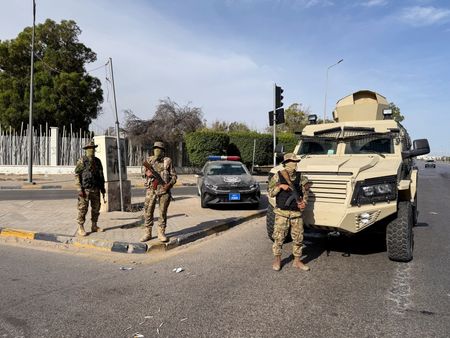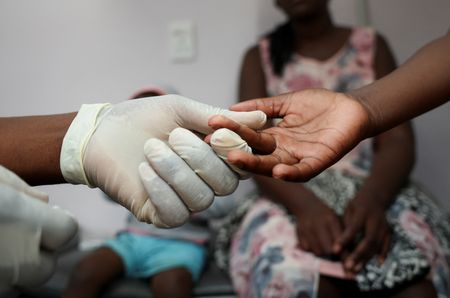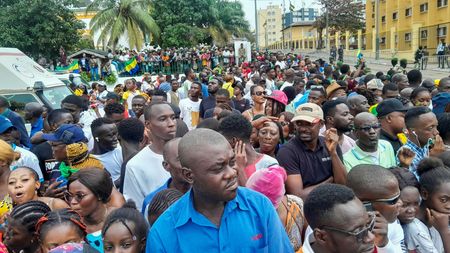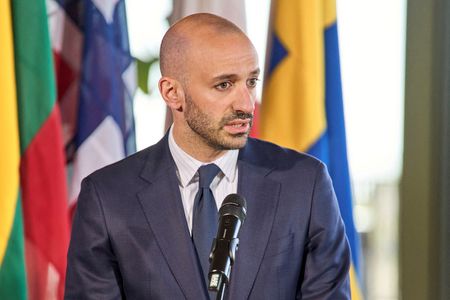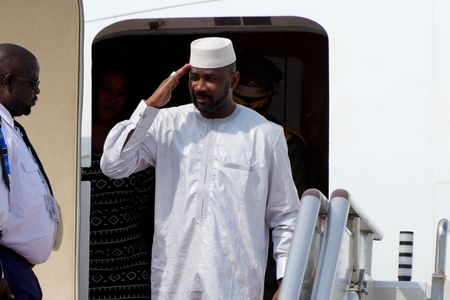(Reuters) -Here is a timeline chronicling Libya’s years of chaos and division:
2011 – Revolt and civil war
An uprising against Muammar Gaddafi’s four-decade rule rapidly spreads, becoming an armed revolt aided by NATO airstrikes. Gaddafi is ousted in August and killed in October by rebels.
2012 – Missed opportunities
A rebel council holds elections for an interim General National Congress which creates a transitional government. True power lies with local armed groups.
Islamist militants gain ground and attack the U.S. consulate in Benghazi, killing the ambassador.
2013 – Growing divisions
Armed groups are ever more powerful, besieging government buildings. The Congress is increasingly divided and trust ebbs as it seeks to extend its term and delay elections.
2014 – East-West schism
The Congress rejects the results of an election to a new parliament – the House of Representatives (HoR) – and sets up a government backed by armed groups in the west.
The newly elected parliament moves from Tripoli to the east in support of a rival government backed by Khalifa Haftar, a former general who has brought together several armed factions as the Libyan National Army. Libya is now split between warring administrations in east and west.
2015 – Islamists on the march
Islamist groups take advantage of the chaos and Islamic State seizes Sirte, Gaddafi’s home city in central Libya, in February.
In December, the rival parliamentary bodies sign the Libyan Political Agreement to set up a new transition.
The agreement confirms the HoR as Libya’s parliament but gives members of the General National Congress a new role as an advisory second chamber – the High State Council (HSC).
2016 – Islamic State driven back
The HoR rejects the new government as it takes office in Tripoli, entrenching Libya’s east-west divide. Western armed factions eventually take Sirte from Islamic State as Haftar fights militants in Derna and Benghazi and seizes the oil crescent region of central Libya.
2019 – Haftar attacks Tripoli
After two more years of on-off fighting across Libya, Haftar drives his LNA through the south, bringing most remaining oil fields under his control. In April, Haftar launches a surprise offensive against Tripoli, taking Sirte en route. He is backed by the United Arab Emirates, Egypt and Russia.
Western Libyan armed groups come together to support the Tripoli government with help from Turkey, their alliance bolstered by a deal on maritime borders that angers Egypt and Greece.
2020 – Ceasefire
Turkey openly offers military support to Tripoli and Haftar’s offensive collapses. As his forces pull back, evidence of atrocities is found in the town of Tarhuna. The sides agree a ceasefire and the U.N. launches a new peacemaking effort aimed at holding national elections the following year.
2021 – A failed election
Eastern and western factions accept a new Government of National Unity (GNU) and Presidency Council, meant to oversee elections in December. But the HoR in the east and the HSC in the west cannot agree on a new constitution or rules for the vote and the election falls apart at the last minute.
2022 – Standoff
Both parliamentary bodies now say the unity government has lost its legitimacy but the prime minister, Abdulhamid al-Dbeibah, refuses to quit. The HoR in eastern Libya again appoints a rival administration, but it fails to enter Tripoli. The Nawasi, a major Tripoli militia, is driven from the capital.
2023 – Paralysis
As efforts to end the impasse stall, the major players work to consolidate their positions.
The catastrophic flood that hits Derna in the east after two poorly maintained dams collapse underscores the havoc caused by 12 years of chaos and division.
2024 – Central Bank crisis
The Presidency Council in Tripoli sacks the veteran Central Bank of Libya (CBL) head Sadiq al-Kabir, a year after Dbeibah replaced the longstanding National Oil Corporation chief. The two bodies had managed to remain relatively independent and the changes prompt a political crisis.
2025 – Tripoli factions battle for supremacy
Major militia leader Abdulghani Kikli, known as Ghaniwa, is killed and factions aligned with Dbeibah rapidly seize his group’s territory. With Dbeibah appearing close to consolidating control over Tripoli after years of fragmentation, intense clashes break out.
(Compiled by Angus McDowall; Editing by Aidan Lewis)

